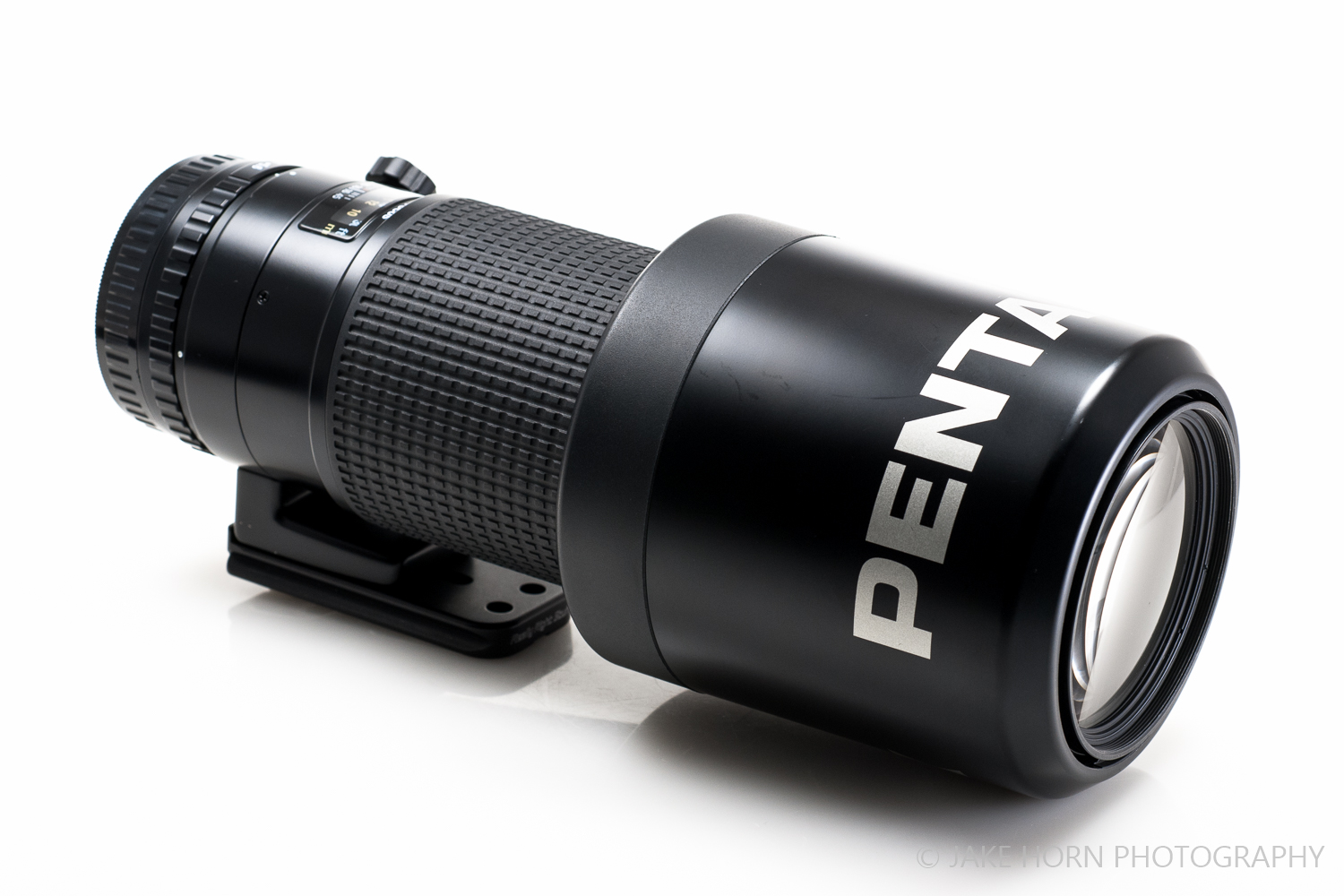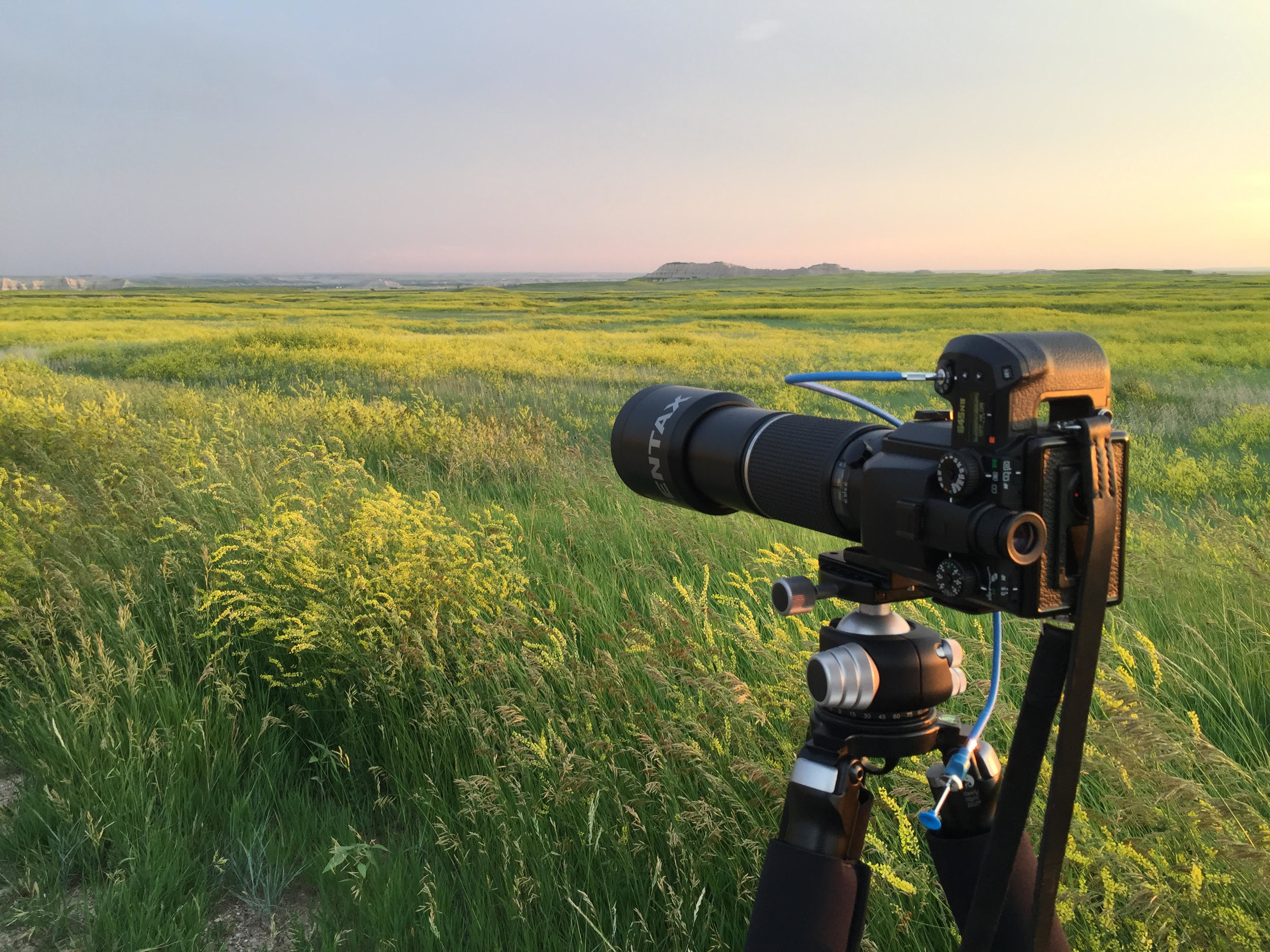For the medium format film user, there are not many options in the way of extreme telephotos. Most 35mm systems offer many shapes and sizes for professional sports photographers, in addition to many affordable 3rd party options. It can be a shock moving to a 645 camera from 35mm, only to discover only 2 or 3 lenses over 300mm. In the case of the Pentax 645, there are two….the monstrous 600mm/5.6 and the 400mm/5.6. The later is the only real option if you plan on bringing more than one lens with you as the 600 fills up all but the largest bag.
Shown Above at 252mm in Length
SPECS:
7 Elements / 6 Groups
Aperture = f5.6 (8 Blades)
Filter Ø = 77mm
Min Focus = 3.0m
Weight = 1.475kg w/hood + caps + tripod plate
Length = 252mm
Length w/Hood = 360mm
35mm Equivalent = 257mm (645 Film)
35mm Equivalent = 334mm (645 Digital)
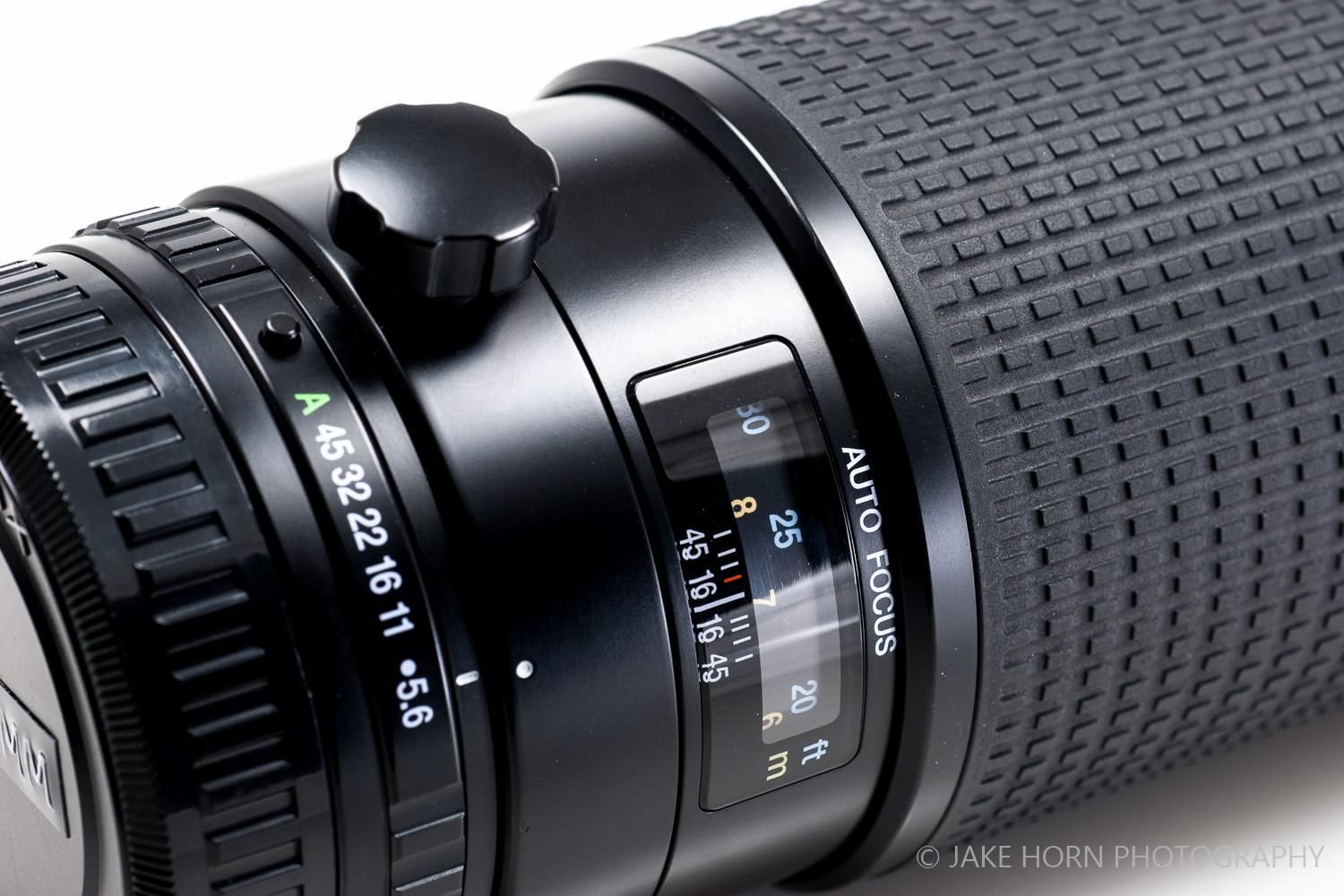
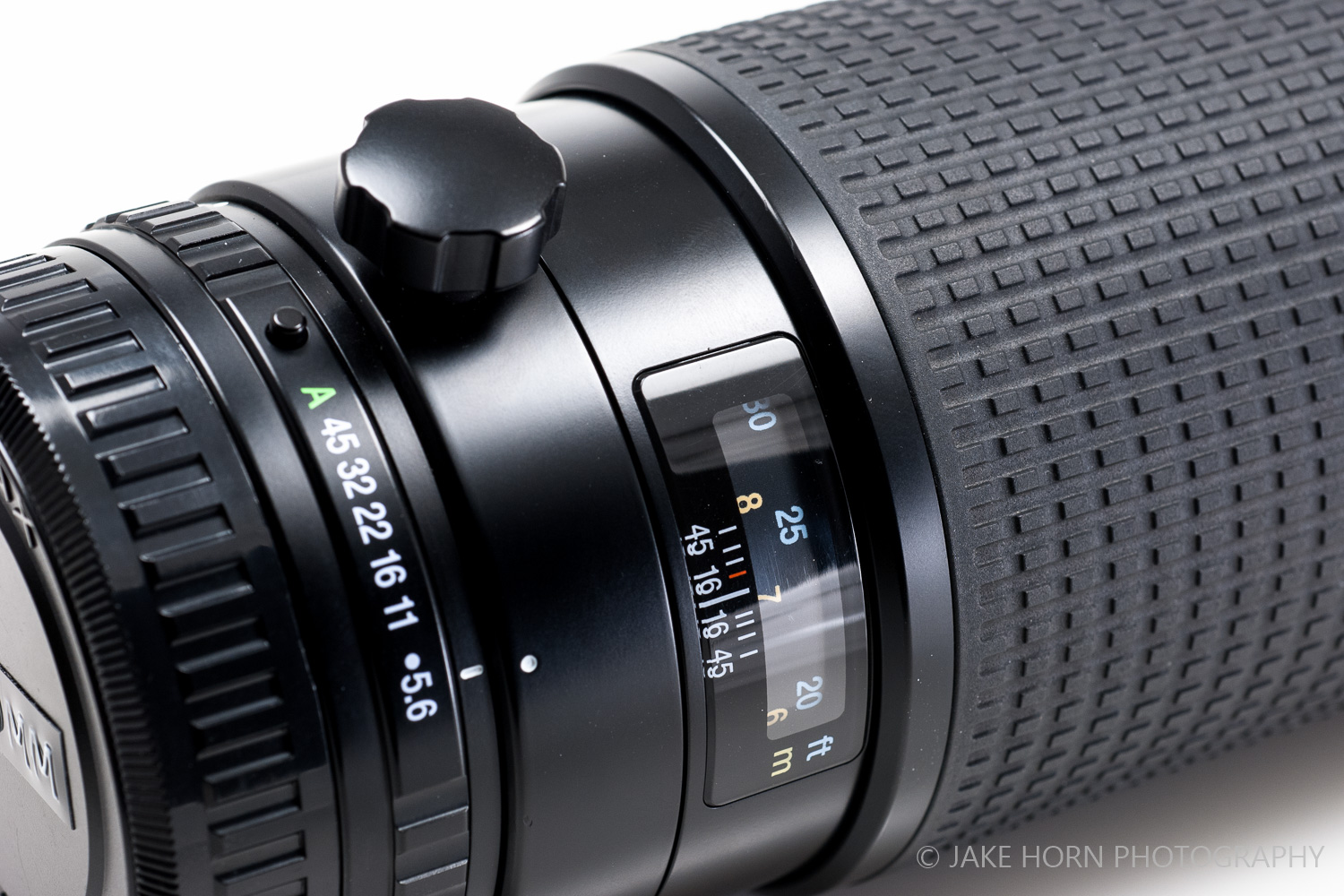
PROS:
There is a lot to like about this telephoto. Let’s start with the tripod collar. Even though the 645 body has tripod mounts for both landscape and portrait, you will want to use the tripod collar for the best stability. Also, the collar allows rotation that makes getting a shot in both orientations a breeze. The ring feels very nice with smooth movement and sturdy clicks every 90 degrees. And yes, the ring can rotate a full 360.
Even though the minimum aperture is a bit slow at f/5.6, this enables the front element to be smaller. The body is a constant diameter throughout the length and allows for a reasonable 77mm filter thread diameter. If you have a decent size collection of lenses, you likely already have filters or step rings to accommodate this common thread size.
Accepts 77mm Filters and Burly Lens Hood
The hood has also been executed very well. It is a quick on and off bayonet style attachment, which is very useful if you need to add or remove a filter. As with most bayonet hoods, it is also reversible. While this does make the lens more bulky in your bag, it really is a mandatory accessory when shooting on sunny days. When a front element is close to the end of the lens, side light can easily bounce off it and ruin your shots. One additional touch that I love is the rubber coating on the hood’s edge.
Really Right Stuff Multi-Use Lens Foot
This lens performs well for the price point. One thing to note for any pictures taken with a 400mm on medium format…camera stabilization is critical. Normal techniques just won’t do as you will see blur from camera shake clear as day. This is why a tripod should be used as much as possible, along with a cable release. In fact, I recommend the Pentax 645Nii for use with the 400 as it’s the only film body that does mirror lock up. With the lens pushing 1.5kg, in addition to the camera body weight, make sure you use a quality tripod/head combo rated for the job.
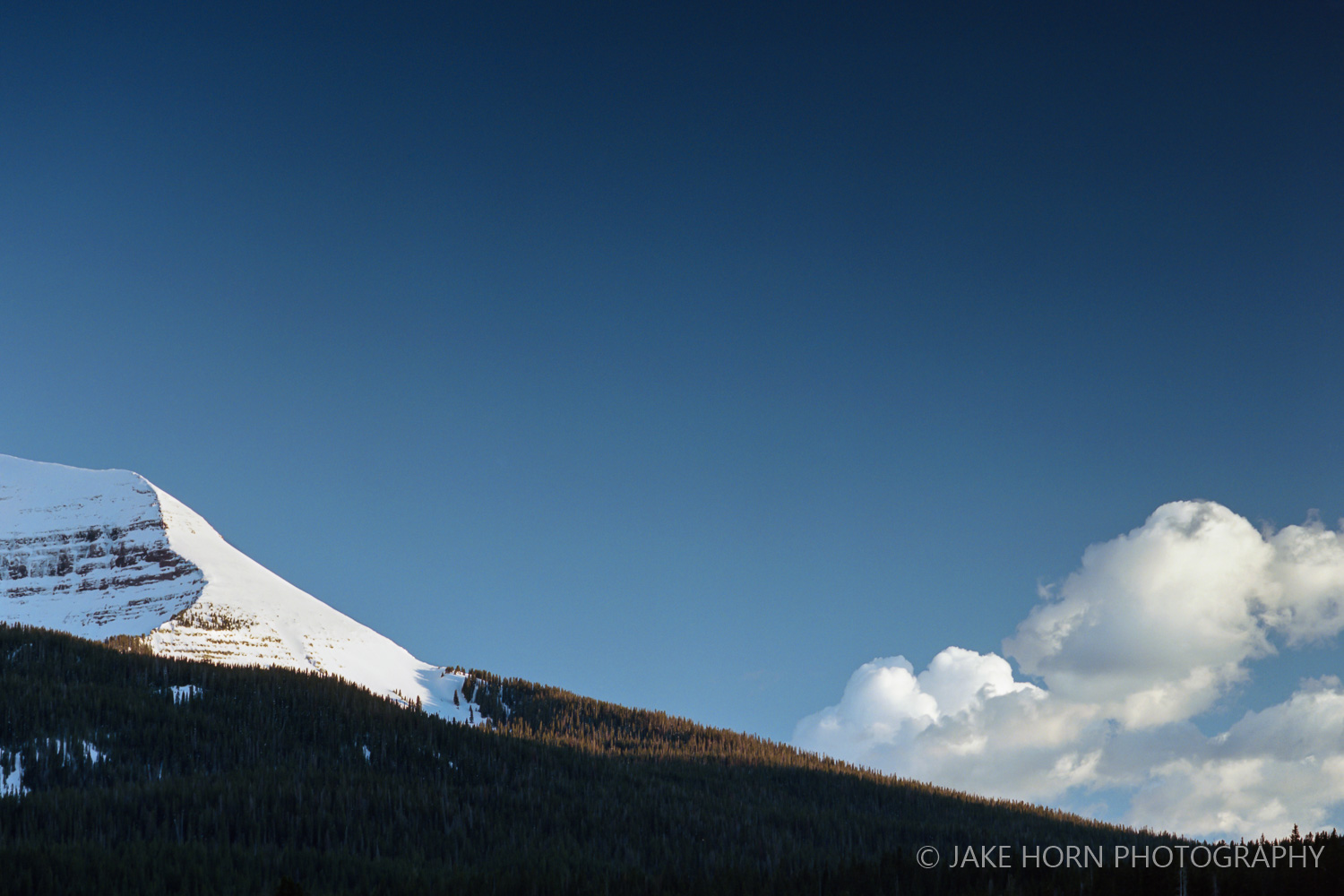
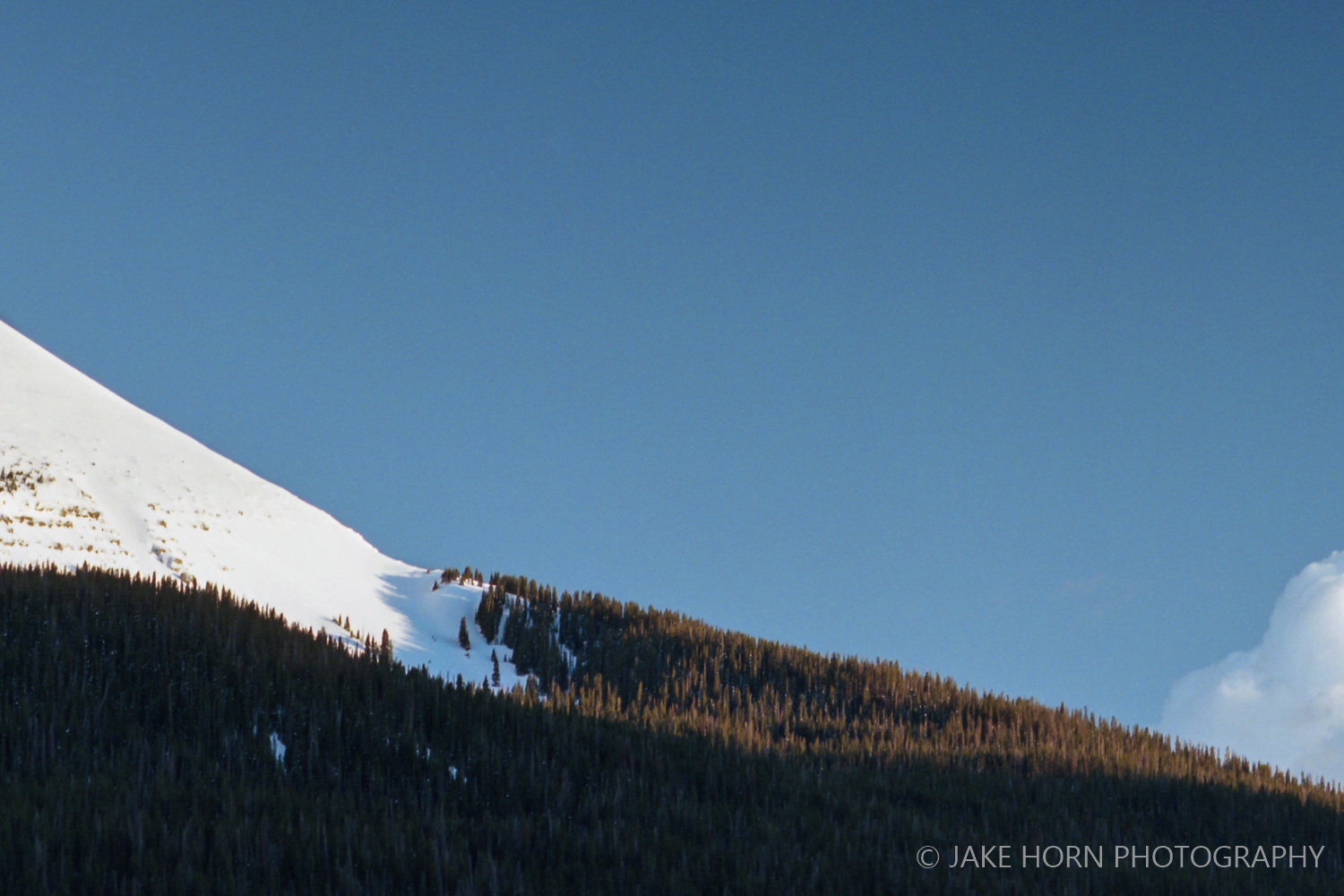
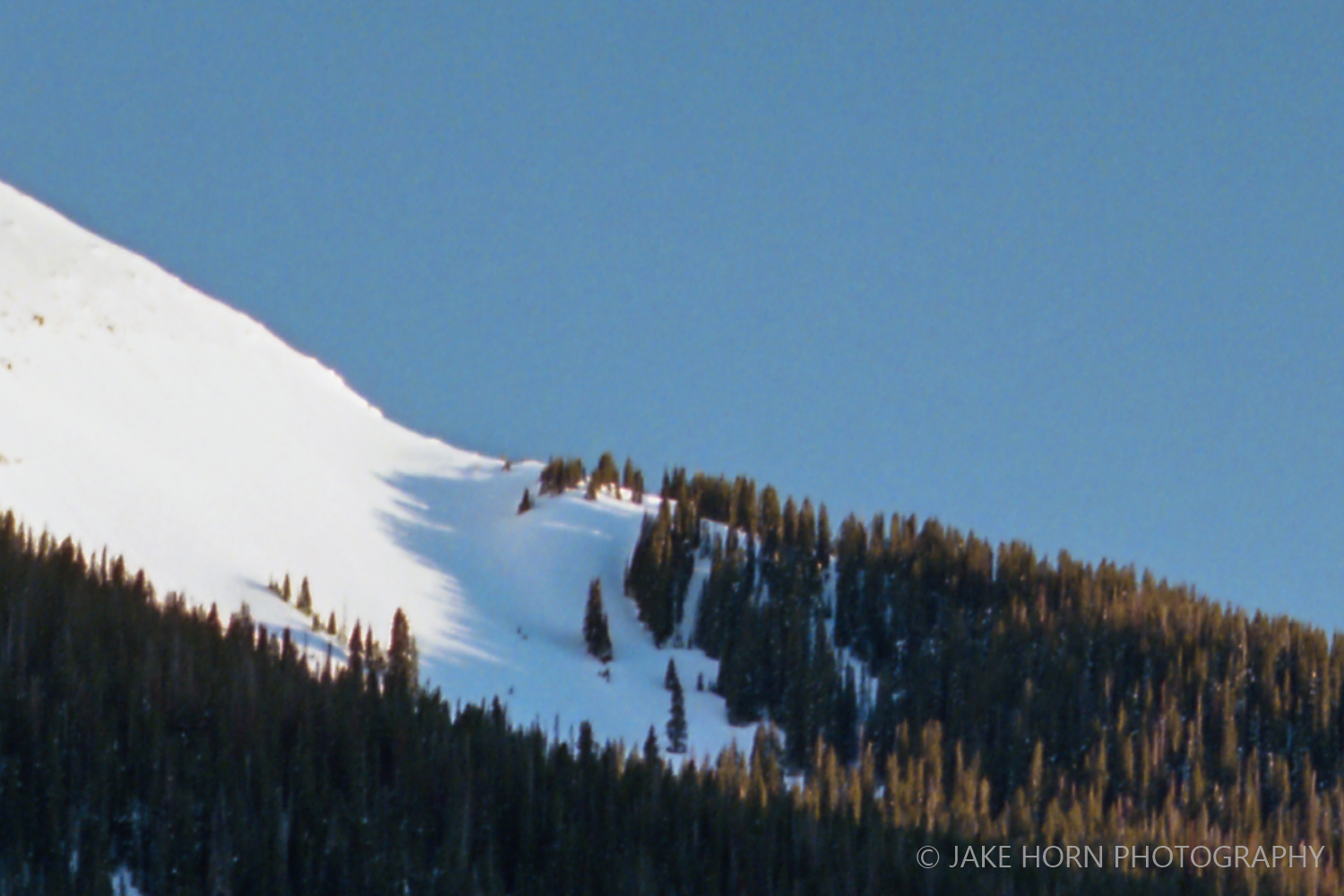
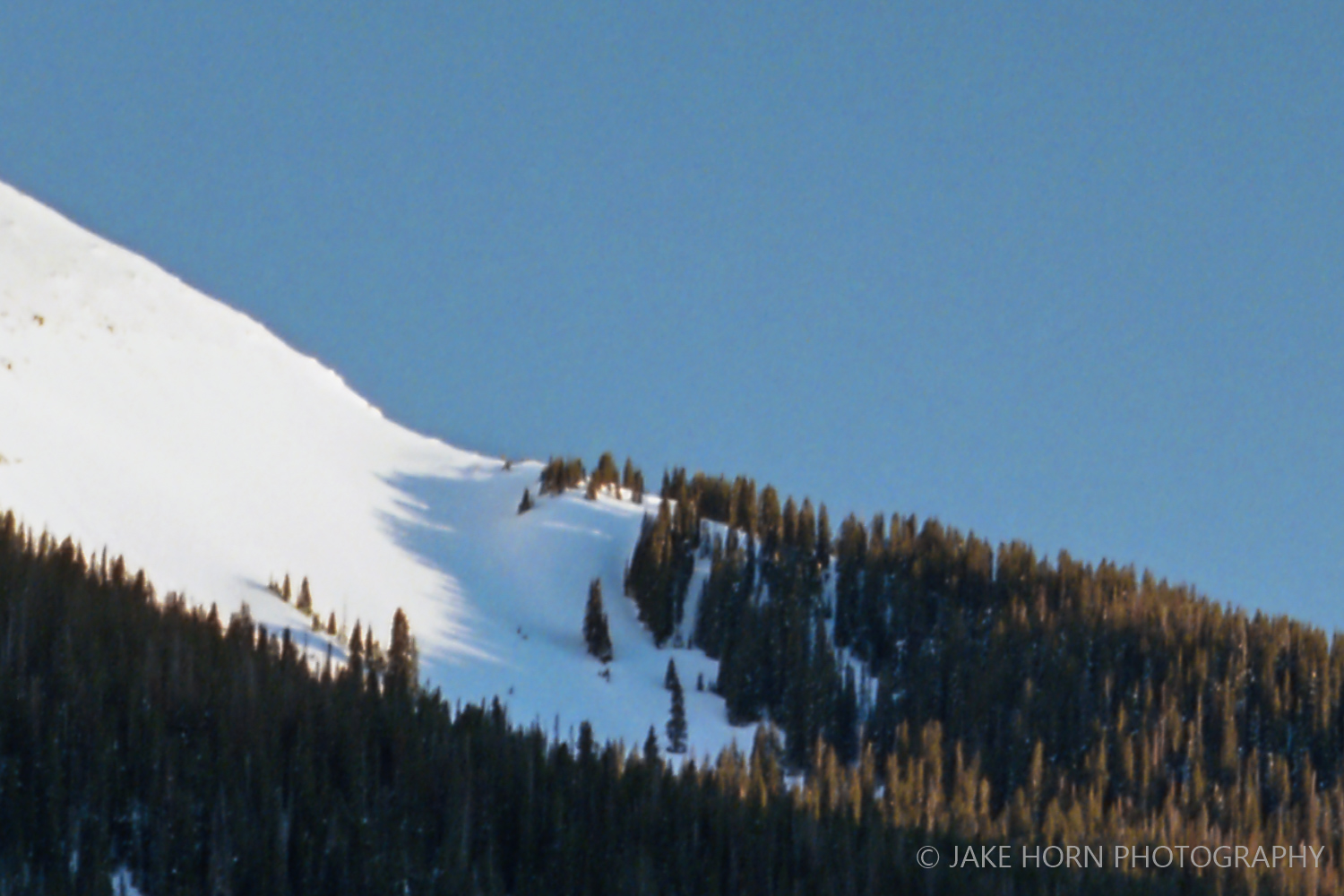
CONS:
Overall, I like the images from the 400/5.6. While it’s not the sharpest lens in the lineup, it’s reach and form factor are unmatched. One performance issue I consistently see is purple fringing. I have demonstrated this in the sample image above. While this can be visible in the right edge contrast conditions, it is easily correctable in post process. In Lightroom, use the defringe option and set the purple hue to 30/90 and the correction amount to +5. The last image in the slide show has this correction applied.
Official Pentax Carrying Case
BOTTOM LINE:
It really is tricky to recommend this lens. While the used prices are very good, using a 400mm on medium format is a special use case. It will not be the best for shooting sports, as you will have a though time getting sharp shots. I rather have sharp 35mm negatives than blurry 4.5x6 ones. So this leaves us with landscape and wildlife photography. I have taken some decent pictures of elk and buffalo with this, but you will need a ton of available light if you need to freeze the action. As for landscapes, I personally like the way large spaces can be pulled in tight with a long focal length.
The thing that swayed my decision to get one is the fact that you can get a lens adapter and also use this on a 35mm SLR. As I don’t have any lenses longer than 200mm for my Nikon, I decided to fill both formats’ telephoto void with this one lens.
Great Sand Dunes National Park | Ektar 100 | f/11 | Tripod + Mirror Lockup
Being Supported by the Really Right Stuff BH-55 & Series 3 Leg Combo

